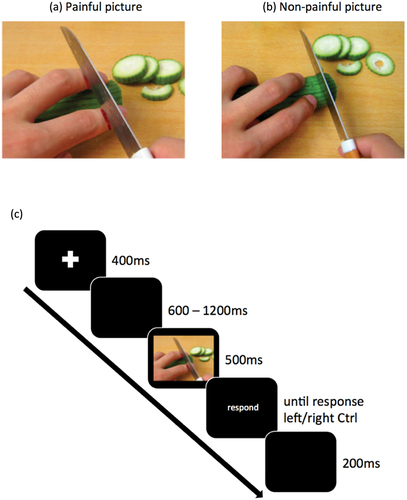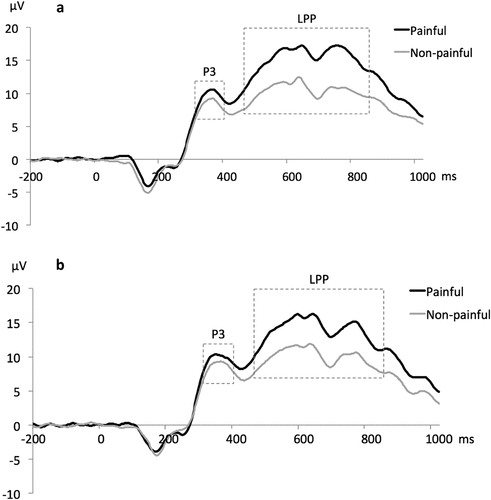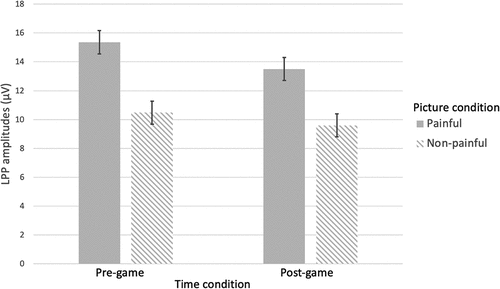Figures & data
Figure 1. Example of stimuli used in the task (Meng et al., Citation2012; Meng et al., Citation2023) (A and B); example of an EEG trial in the pain judgment task (C).

Table 1. Main and interaction effects for the behavioral pain rating.
Figure 2. Grand average ERP waveforms averaged across 6 electrodes with marked time windows for the P3 and the LPP components: (A) pre-game condition, (B) post-game condition.

Table 2. Main and interaction effects for the P3 component.
Figure 3. P3 amplitude as a function of Time (pre-game vs. post-game) and pain (painful vs. non-painful pictures).

Table 3. Main and interaction effects for the LPP component.
Figure 4. LPP amplitude as a function of Time (pre-game vs. post-game) and pain (painful vs. non-painful pictures).

Table 4. Main and interaction effects for the P3 component with C-ME as a covariate.
Figure 5. Visualization of the Time x pain x C-ME interaction for P3.

